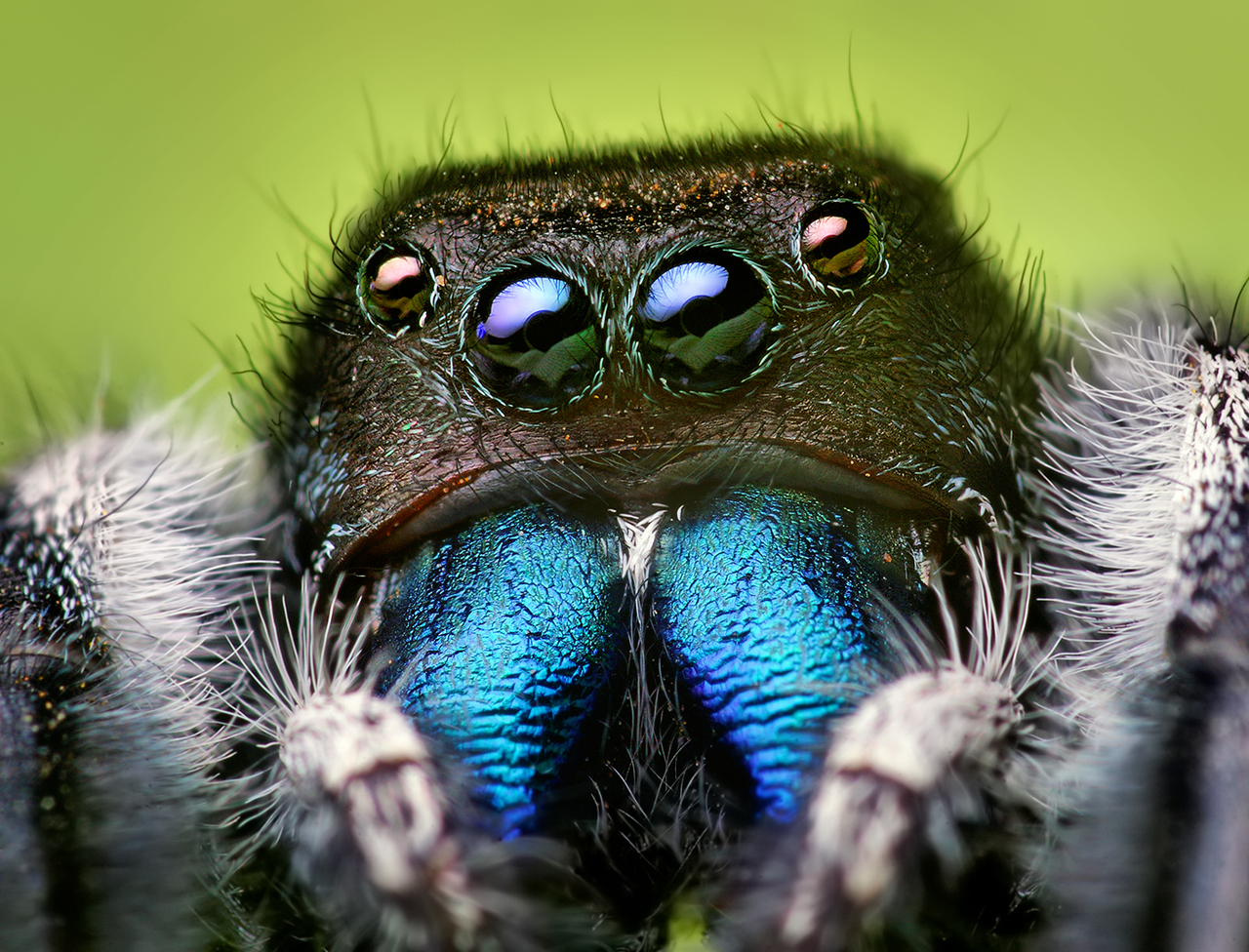Jumping Ability
Phidippus audax along with the other salticids have a
unique ability to jump to attack its prey, whether flying or
sedentary. Now I know you have probably tried to swat a bee, or
even, try and kill a fly. Most likely you were not successful
the first few attempts. These spiders are fast enough and
accurate enough with their jumps that they can grab a fly, or
bee, right out of the air! Studies on the jumping ability of
Phidippus audax has shown that they have the ability to
precisely measure distance, and direction of its prey’s position
with respect to gravity. They will adjust their take-off
velocity to compensate for distance and gravity, which displays
another unique ability of these already extraordinary organisms.
Remarkably, these spiders can also complete an accurate jump
from an upside down position! Research has found they even have
the ability to retain the direction and position of their prey.
This shows that theses spiders, in a sense, have a memory. This
is represented in the occasional detours they will take to their
prey, as well as if they missed their prey on the first attempt.
Phidippus audax can jump accurately about 10-50 times
their body length accurately and wi th a velocity of about 80-90
cm/sec. This is comparable again to a basketball player that
adjusts his/her velocity of a shot due to their distance and
direction from the basket. This spider also has not been shown
to glide, or use air resistance, which means their jump is
strictly just a jump.
th a velocity of about 80-90
cm/sec. This is comparable again to a basketball player that
adjusts his/her velocity of a shot due to their distance and
direction from the basket. This spider also has not been shown
to glide, or use air resistance, which means their jump is
strictly just a jump.
Phidippus audax’s hind two legs have been shown,
through various studies, to be the source of most of the
propulsion for the jump. The propulsion is provided through a
hydraulic type pressure build-up of blood in the spider’s legs.
For every jump, Phidippus audax attaches a dragline to
the substrate it is jumping from in order to protect it from
falling if they miss the jump, and in order to brake if
necessary. Not only do they have to jump an accurate distance to
their prey, they also have to orient their “catching basket,” or
legs, around their prey to make their jump successful. Which is
also another complex process that Phidippus audax is
able to easily complete (Harland 2000).
The jumping ability of these spiders has been extensively
studied and this is only a partial explanation of how these
spiders can do such accurate and lengthy jumps. If you would
like more information on the process that the jumping spiders go
through in order to complete these jumps check out this research
paper.
Here is a diagram of the process of their jump.
Okay... I'm a little scared now. Do they actually make more of
these crazy, jumping, cat-like, other spider-eating, dancing,
scary, yet awesome things? Yup!
